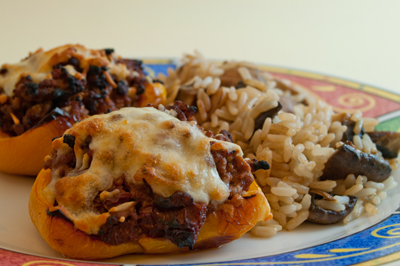Choosing kitchen knives
When you choose a kitchen knife, the following are things to look out for to ensure you get a really good quality knife that will last a long time:
Good quality handle – a cheap plastic handle will not last very long, and may discolour and be prone to nicks or even snapping off.
Rivets holding the blade onto the handle – two is good, but three is best, to ensure that blade and handle do not part. Below is a knife with three rivets.
Extension of blade through handle – often you will see the length of the blade extend into the handle. The best knives have the blade extend right to the end of the handle, and it can be seen both on the top and bottom of the knife. Below is a knife where the blade only extends partway through the blade, which makes it more likely snap, whereas on the knife above the blade goes right to the end of the handle.
Good quality stainless steel blade – this is essential for your knife to last a long time. You may see older knives made of steel that have discoloured over time, and they will probably need to be sharpened each time you use them. These will be very good quality blades but they do not have the qualities of the modern steel that keep them bright, sharp and shiny. One good quality type of steel to look out for in the UK is Sheffield Steel.
Safety element – many knives will have a small wedge or incline at the base of the blade to stop the fingers slipping onto the blade when in use. See the incline on the knife below.
If you combine all these characteristics you should be able to get a knife that lasts you a lifetime.
Particularly good brands of knives are:
However on the other side of the coin, an extremely cheap knife will also do a good job – it just may not last you very long. I have had some excellent knives from the supermarket over the years, and I came to the conclusion that cheaper knives worked so well because the blades were thin, as less metal was used. You may however have to go through a few duff knives before you pick a good supermarket one.
So to sum up I wouldn’t recommend buying a medium priced knife. Either shell out the big bucks and get knives that will last you a lifetime. Or if you’re watching the pennies, pick up knives for a couple of quid at the local supermarket and you may still get surprisingly good results.
I should say, I did work for Cutco many moons ago one summer, and became acquainted with their knives. Whilst I turned out to be a rubbish sales person I did think the product was great!
Tags: knives





















